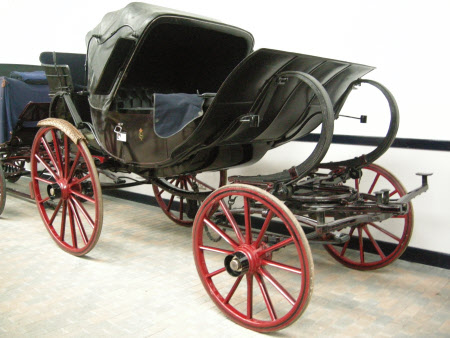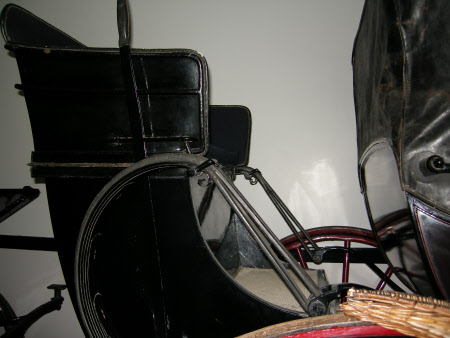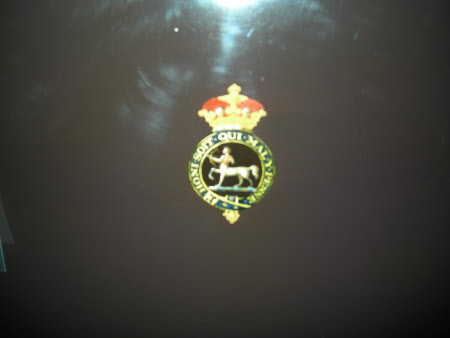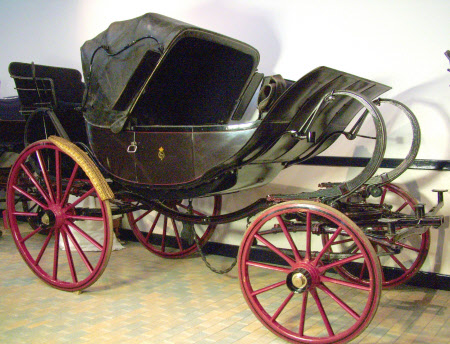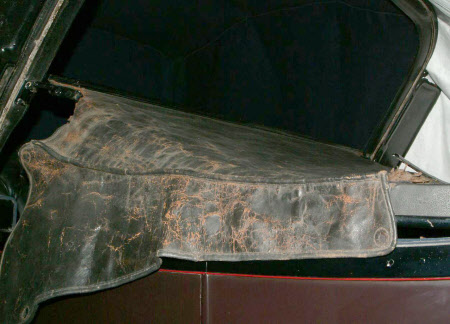Barouche
Barker and Co.
Category
Carriages & other vehicles
Date
1860
Materials
Painted wood body with leather hood, wool cloth and morocco leather upholstery and four iron shod wheels.
Measurements
237.5 x 391 x 192cm (7ft 9 1/2in x 12ft 11in x 6ft 3 1/2in)
Place of origin
Chandos Street
Order this imageCollection
National Trust Carriage Museum
NT 272935.1
Caption
The barouche was an elegant family vehicle, but only used by the very wealthy. This example was built for the 5th Marquis of Lansdowne, and was used when King Edward VII and Queen Alexandra visited Wiltshire in 1907. This carriage was driven postillion. The footmen rode on the rumble seat and worked the hand brake when travelling down hills. There is one head over the principal seat at the back. The front seat is covered by a knee flap, which was closed in bad weather, but could be hinged up to form a seat back for this additional seat in fine weather.
Summary
Barouche built by Barker and Co. of London for the Marquess of Lansdowne circa 1860. Barouche (four wheels) for a team of horses. This carriage is sprung on C and under springs. The coach pole with drag shoe are present along with wicker dress guards. The interior is of black leather with three cushions. Painted in dark brown livery with red lining. Wheels - dark red with black stripe flanked by single black lining.
Full description
Barouches were introduced from Germany at the turn of the 19th century, and were then known as German Wagons. These early barouches were heavy versatile carriages, often used for travelling as well as everyday driving. After the railways made travelling carriages redundant in the mid nineteenth century, barouches became the ultimate park vehicle for taking the air and seeing society and, perhaps more importantly, being seen. Park barouches had bodies much shallower than this one - better to be seen in. A barouche is superficially similar to a landau but, whereas a landau has two heads which completely enclose the body, a barouche only has one, over the principal seat at the back. The front seat is covered by a knee flap, which was closed in bad weather, but could be hinged up to form a seat back for this additional seat in fine weather. This example was built for the 5th Marquis of Lansdowne, by Barker & Co., London. It was used when King Edward VII and Queen Alexandra visited Calne, in Wiltshire, and had lunch at Bowood House, the Lansdowne family seat, in 1907. The barouche was one of the most elegant family vehicles, but only used by the very wealthy. On this example four horses would have been used with postillions riding the nearside horses. A footman rode on the rumble seat and operated the hand brake when travelling down hills (the rumble is an alternative name for the hind boot).
Provenance
Generously transferred to the National Trust by Bristol City Council in 2018. The carriage was previously on loan to the National Carriage Collection from 1994 to 2018.
Marks and inscriptions
On the nearside side panel.: Family crest of the Marquess of Lansdowne. On the offside side panel.: Family crest of the Marquess of Lansdowne. On front nearside axle cap.: BARKER & CO CHANDOS STREET On front offside axle cap.: BARKER & CO CHANDOS STREET On rear nearside axle cap.: BARKER & CO CHANDOS STREET On rear offside axle cap.: BARKER & CO CHANDOS STREET On front nearside axle components.: B On front offside axle components.: B On rear nearside axle components.: B On rear offside axle components.: B On inside face of flange of axle cap.: COLLINGE PATENT LAMBETH SURREY 4724 . CHARLES COLLINGE PATENT No 64 BRIDGE ROAD LAMBETH
Makers and roles
Barker and Co., coach builder

